SUPERCHARGE YOUR ONLINE VISIBILITY! CONTACT US AND LET’S ACHIEVE EXCELLENCE TOGETHER!
In today’s digital age, businesses thrive on accessibility and visibility across various platforms. One crucial aspect of maintaining an online presence is managing business information effectively. With the rapid evolution of technology, APIs (Application Programming Interfaces) have become indispensable tools for developers, offering seamless integration and interaction between different software systems.
Enter the Business Information API – a powerful interface provided by Google, designed specifically for managing business information with ease and efficiency. Whether it’s updating contact details, adding new locations, or refining categories, this API streamlines the process, empowering businesses to maintain accurate and up-to-date information across Google platforms.
In this DIY guide, we’ll delve into the intricacies of the Business Information API, breaking down the steps needed to harness its capabilities effectively. From setting up a new project on the Google Developer Console to enabling the API and accessing its REST resources, we’ll navigate through the essential tasks, providing clear instructions and insights along the way.
Join us on this journey as we unlock the potential of the Business Information API, empowering businesses to enhance their online presence and connect with their audience more effectively.
What is Business Information API?
The Business Information API provides an interface for managing business information on Google.

Steps To Follow
From Google Developer Console dashboard > go to Select a project > New Project > Give Project Name > Click on Create’, as shown here.
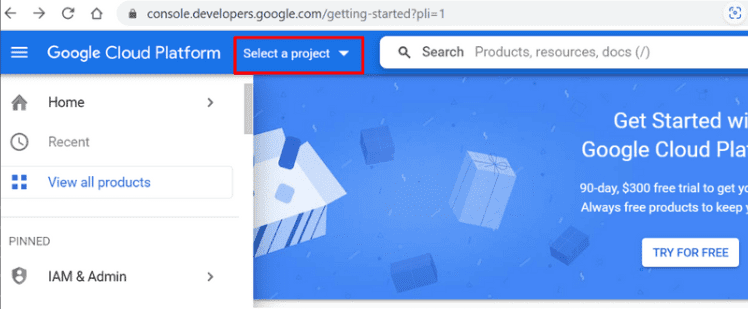
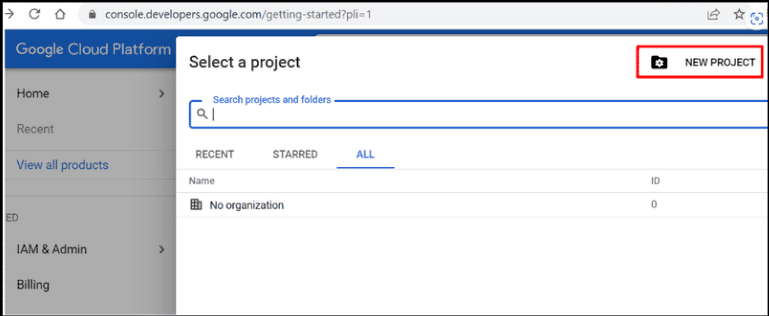
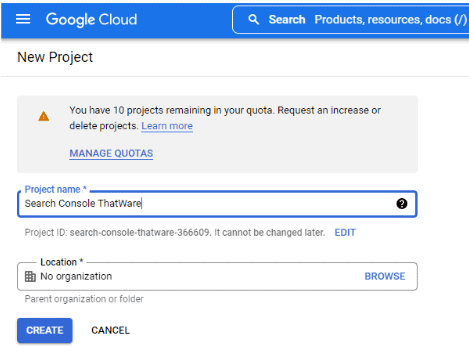
A notification will appear instantly as shown here

Thereafter select API & Services > Credentials
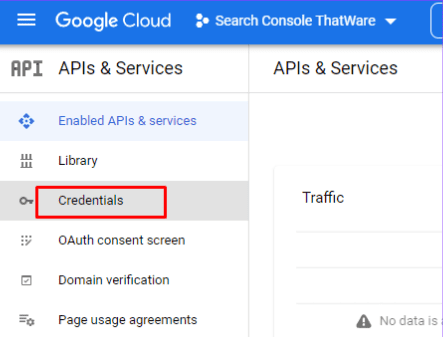
Then click on Create Credentials
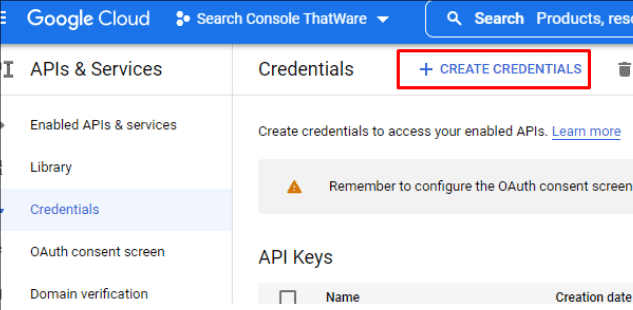
Next, select Service Account
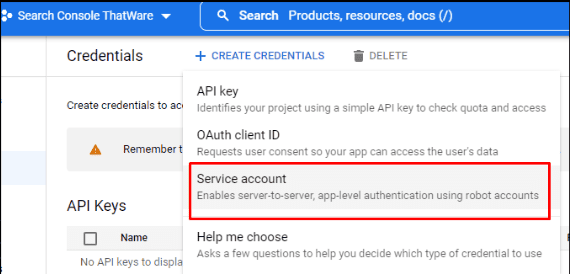
Then click on Create and Continue button
Next, Select Role to Owner and click > continue > done as shown below:
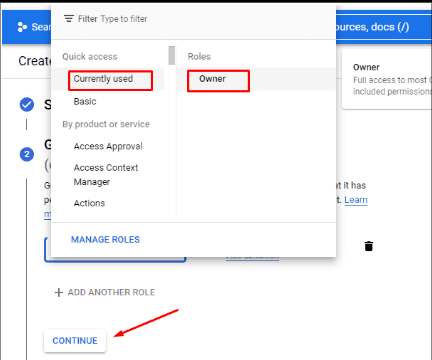
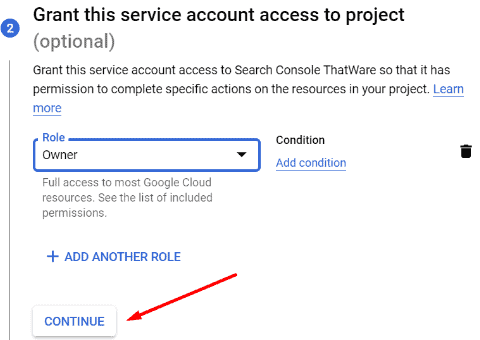
Once the complete setup is done, then copy the marked generated email to a notepad for future use:

Then click on this marked email and add key as shown below:
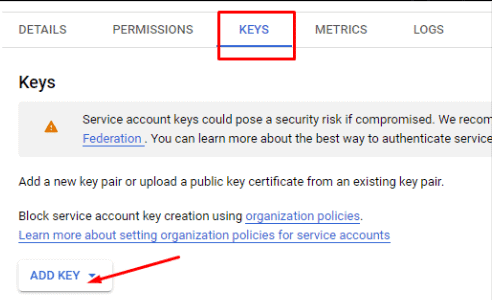
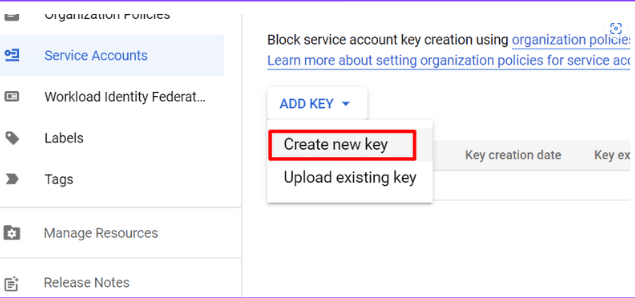
Then select JSON and click on Create
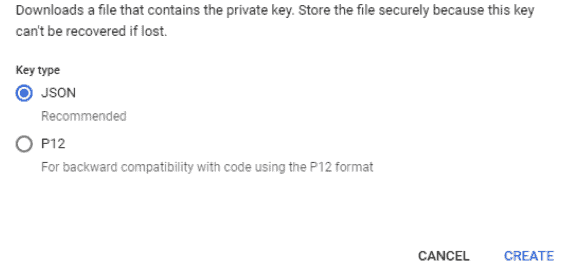
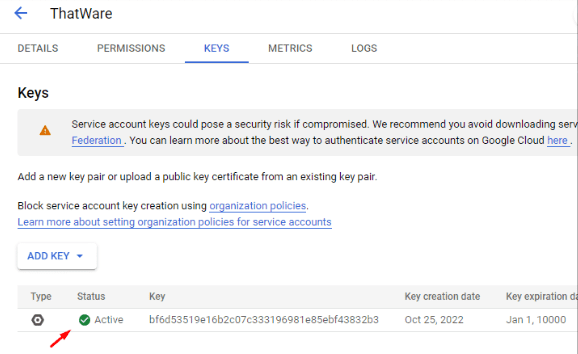
Now, let’s move on to enabling the API part. Here are the steps to consider:
Click on left hamburger menu > APIs & Services > Library
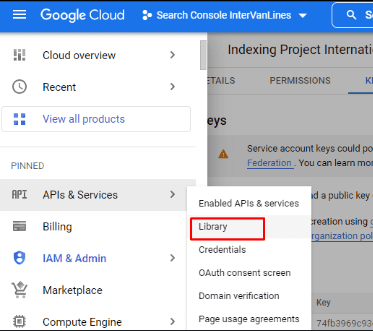
Then search business information API on the library

And click on Enable option
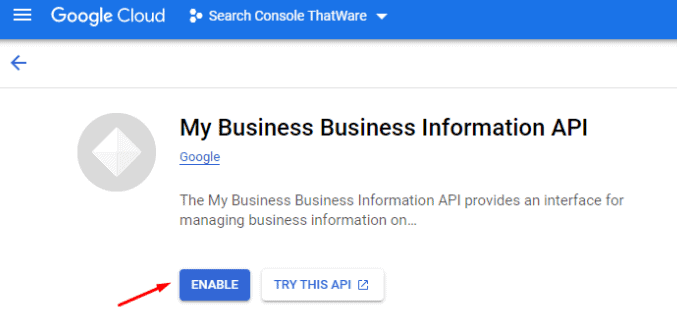
These are the entire Google Developer Console steps to consider
REST Resource
accounts.locations
attributes
categories
chains
googleLocations
locations
locations.attributes
Seamless Integration: Unlocking the Power of Business Information API
In the ever-evolving landscape of digital marketing, maintaining accurate and up-to-date business information is paramount. The Business Information API, offered by Google, emerges as a powerful tool in this realm, enabling businesses to streamline the management of their online presence. Let’s delve into how this API facilitates seamless integration and unlocks its full potential.
Centralized Management: One of the key benefits of the Business Information API is its ability to centralize the management of business information. Instead of juggling multiple platforms and manually updating details across various directories, businesses can leverage the API to consolidate these tasks into a single interface. This centralized approach not only saves time but also ensures consistency and accuracy across all platforms.
Real-Time Updates: In today’s fast-paced digital environment, timeliness is crucial. The Business Information API empowers businesses to make real-time updates to their information. Whether it’s changing operating hours, updating contact details, or adding new locations, these updates reflect instantly across Google platforms. This real-time synchronization ensures that customers always have access to the most current and relevant information.
Customizable Solutions: Every business has unique needs and requirements when it comes to managing its online presence. The Business Information API offers customizable solutions to cater to these diverse needs. Developers can integrate the API into existing systems and tailor it to align with specific business goals. Whether it’s customizing data fields, implementing automated workflows, or integrating with third-party applications, the API provides the flexibility to adapt to evolving business requirements.
Enhanced User Experience: A seamless user experience is paramount for customer satisfaction and retention. By leveraging the Business Information API, businesses can enhance the user experience across various touchpoints. Accurate and consistent business information not only instills trust but also makes it easier for customers to find and engage with businesses online. Whether it’s searching for a nearby store, viewing business hours, or accessing contact details, a seamless integration ensures a frictionless experience for users.
Scalability and Efficiency: As businesses grow and expand, scalability becomes a critical factor in managing their online presence. The Business Information API offers scalable solutions that can accommodate the evolving needs of businesses. Whether it’s managing a handful of locations or a global network of branches, the API can scale to meet the demands of any size business. Moreover, by automating manual tasks and streamlining processes, the API enhances efficiency, allowing businesses to focus on core operations and strategic initiatives.
The Business Information API offers a comprehensive solution for businesses seeking to streamline the management of their online presence. From centralized management and real-time updates to customizable solutions and enhanced user experiences, the API unlocks a myriad of benefits. By seamlessly integrating the API into their workflows, businesses can harness its power to enhance visibility, drive engagement, and ultimately, achieve their business objectives.
Enhancing Online Visibility: Enabling and Leveraging REST Resources
In today’s digital age, online visibility is paramount for businesses looking to reach their target audience and thrive in competitive markets. With consumers increasingly relying on digital platforms to discover and engage with businesses, ensuring a strong online presence has become a strategic imperative. The Business Information API, offered by Google, presents a valuable opportunity for businesses to enhance their online visibility through the effective utilization of REST resources. In this comprehensive guide, we’ll explore the steps involved in enabling and leveraging REST resources to amplify online visibility and drive business growth.
Understanding REST Resources:
REST, or Representational State Transfer, is a software architectural style that defines a set of constraints for creating scalable web services. In the context of the Business Information API, REST resources represent the various endpoints through which developers can access and manipulate business information programmatically. These resources encompass a wide range of functionalities, including managing business locations, attributes, categories, and more.
Enabling the API:
The first step in leveraging REST resources to enhance online visibility is to enable the Business Information API within the Google Developer Console. This can be accomplished by navigating to the API & Services section and selecting the Library option. From there, users can search for the Business Information API and proceed to enable it for their project. Enabling the API grants developers access to a wealth of REST resources, empowering them to programmatically interact with business information stored on Google platforms.
Accessing REST Resources:
Once the Business Information API is enabled, developers can begin leveraging REST resources to enhance online visibility. These resources provide a comprehensive set of endpoints for managing various aspects of business information, from basic details such as name and address to more advanced attributes like categories and attributes. By accessing these resources programmatically, businesses can automate the process of updating and maintaining their online profiles, ensuring that they remain accurate and up-to-date across Google platforms.
Utilizing Location Management Endpoints:
One of the key pillars of online visibility is ensuring that businesses are easily discoverable by potential customers. The Business Information API offers a range of REST resources specifically geared towards location management, allowing developers to programmatically add, update, and delete business locations. By leveraging these endpoints, businesses can ensure that their physical locations are accurately represented on Google Maps and other relevant platforms, making it easier for customers to find them and visit their premises.
Optimizing Attribute and Category Management:
In addition to managing physical locations, businesses can also leverage REST resources to optimize their attribute and category listings. Attributes provide additional information about a business, such as its amenities, services, or specializations, while categories help classify businesses into relevant industry segments. By programmatically managing attributes and categories using REST endpoints, businesses can ensure that their profiles are accurately categorized and contain relevant information, thereby enhancing their visibility to potential customers searching for specific services or offerings.
Enhancing Searchability with Google Locations:
Google Locations represent a powerful tool for enhancing online visibility, allowing businesses to create and manage virtual representations of their physical locations. By leveraging REST resources associated with Google Locations, businesses can optimize their online profiles to maximize searchability and engagement. This includes updating business hours, adding photos and descriptions, responding to customer reviews, and more. By actively managing their Google Locations using REST endpoints, businesses can ensure that they present a compelling and accurate representation of their brand to potential customers.
Implementing Automated Workflows:
One of the key advantages of leveraging REST resources is the ability to automate repetitive tasks and streamline workflows. By integrating the Business Information API into existing systems and processes, businesses can programmatically update and manage their online profiles with minimal manual intervention. This includes syncing data from internal databases, triggering updates based on predefined criteria, and responding to customer inquiries in real-time. By implementing automated workflows using REST endpoints, businesses can save time and resources while ensuring that their online presence remains robust and up-to-date.
Conclusion
In the dynamic landscape of digital marketing, maintaining a strong online presence is essential for businesses to thrive and succeed. The Business Information API, offered by Google, emerges as a powerful tool for businesses seeking to enhance their online visibility and connect with their target audience effectively. By enabling seamless integration and leveraging REST resources, businesses can streamline the management of their online profiles, ensuring accuracy, consistency, and relevance across Google platforms.
From centralizing management and enabling real-time updates to optimizing attributes, categories, and Google Locations, the Business Information API provides a comprehensive solution for businesses looking to amplify their online visibility. By harnessing the power of REST resources, businesses can automate workflows, scale operations, and deliver a seamless user experience to their customers.
In conclusion, the Business Information API represents a valuable asset for businesses looking to stay ahead in today’s competitive digital landscape. By embracing its capabilities and implementing best practices, businesses can unlock new opportunities for growth, engagement, and success in the online world. With the right strategy and execution, the Business Information API empowers businesses to achieve their objectives and thrive in the ever-evolving digital ecosystem.
If you want to know more about My Business Information API, you are in the right place. To know more, visit the site of ThatWare now.


